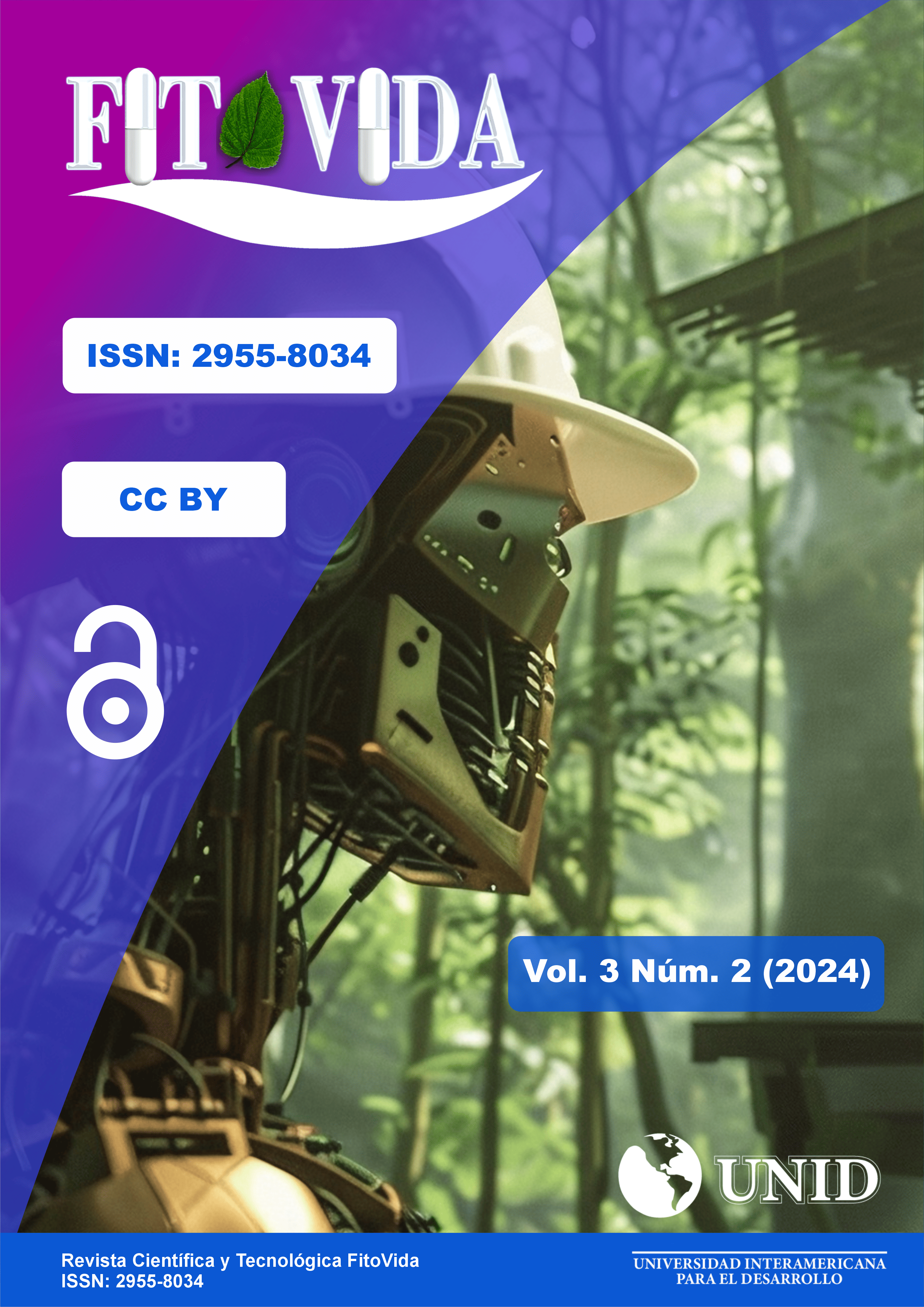Abstract
The sustainable use of briquettes as compacted solid biofuel was analyzed, manufactured from cherry sawdust (Prunus cerasus), using corn bagasse, aloe vera gel and shredded cardboard as a binder, based on agricultural waste. For this, two types of briquettes were produced, with ideal conditions that favor their use, composed of raw materials in different quantities. Through the development of the briquettes, the samples were analyzed, obtaining values of the wood anatomy, weight, density, moisture content, combustion time and percentage of cellulose. Establishing that the briquette that presents the appropriate physicochemical and mechanical properties is the type I briquette, that is, the mixture of corn bagasse and aloe vera gel. Wet weight values of between 0.11527 kg and 0.11941 kg and a dry weight of between 0.09166 Kg and 0.09471 Kg were obtained; also, with a combustion time of between 50'.34" and 57'.10" and a cellulose percentage of 47.54% based on the first treatment and 46.95% in the second treatment.
References
Berastegui, C., Ortega, J., Mendoza, J., González, J. & Gómez, R. (2017). Elaboración de biocombustibles sólidos densificados a partir de tusa de maíz, bioaglomerante de yuca y carbón mineral del departamento de Córdoba. Ingeniare. Revista chilena de ingeniería, 25(4), 643–653. https://doi.org/10.4067/S0718-33052017000400643
Cartagena, R., Rivera, H., Velásquez, P., Falcón, R. & Velarde, A. (2023). Evaluación del nivel de emisiones y poder calorífico en briquetas de residuos del olivar. Ingeniería Energética, 44(2). https://rie.cujae.edu.cu/index.php/RIE/article/view/852
González, J. & Rosales, M. (2016). Elaboración y caracterización de briquetas a partir de aserrín. Universidad Continental. https://repositorio.continental.edu.pe/bitstream/20.500.12394/10655/1/IV_FIN_107_TE_Huaman_Ramirez_Surichaqui_2021.pdf
Huanca, J. (2017). Estudio sobre el contenido de celulosa en briquetas de residuos de Prunus cerasus. Universidad Nacional de San Antonio Abad del Cusco. https://tesis.pucp.edu.pe/repositorio/bitstream/handle/20.500.12404/29085/ARONES%20GOMEZ_PINO%20PRADO.pdf
Huamán, R. & Ramírez, S. (2021). Diseño y elaboración de briquetas ecológicas para la obtención de energía. Universidad Continental. https://repositorio.continental.edu.pe/bitstream/20.500.12394/10655/1/IV_FIN_107_TE_Huaman_Ramirez_Surichaqui_2021.pdf
Jones, B. (2010). The evolution of Namibia’s communal conservancies. En Rights, Community (Ed.), Conservation and contested land (pp. 106–120). Earthscan. https://doi.org/10.4324/9781849775052-14
Gupta, M., Kumari, A., Mishra, M., Akram, M. & Thakur, I. (2022). Agro-forestry waste management: A review. Chemosphere, 287(Pt 3), 132321. https://doi.org/10.1016/j.chemosphere.2021.132321
Ortega, K., Monago, T. & Caballero, C. (2021). Performance of ecological briquettes to reduce pollutant emissions applied to an artisanal brickyard in the Peruvian Andes. En 19th LACCEI International Multi-Conference for Engineering, Education, and Technology. https://laccei.org/LACCEI2021-VirtualEdition/student_papers/SP651.pdf
Kumar, S., Rahmawati, R. & Adi, P. (2022). Revisión bibliográfica sistemática sobre briquetas: propiedades físicas y mecánicas. Journal of Renewable Energy Research, 12(3), 1454–1465. https://repository.universidadean.edu.co/server/api/core/bitstreams/ae4d4b35-3c81-476c-95af-94f473d78a31/content
Álvarez, A., Martínez, C., Gutierrez, A. & Ruiz, G. (2024). Producción de briquetas a partir de residuos biomásicos. Revista Internacional de Contaminación Ambiental, 40. https://doi.org/10.20937/RICA.55085
Olazabal, M. & Talavera, H. (2021). Análisis físico-mecánico de briquetas elaboradas con diferentes aglutinantes. Universidad Nacional Ucayali. https://repositorio.ucv.edu.pe/bitstream/handle/20.500.12692/91679/Olazabal_MKA-Talavera_HAC%20SD.pdf?sequence=1
Preciado, A., Ruiz, J., Villegas, M., Domínguez, J. & González, G. (2022). Aprovechamiento de subproductos de la industria agroalimentaria: Un acercamiento a la economía circular. Revista Iberoamericana de Tecnología Postcosecha, 23(2), 92. https://www.redalyc.org/journal/813/81373798002/html/
Valderrama, J., Aguirre, A. & Costilla, M. (2017). Caracterización física y energética de residuos orgánicos para producción de briquetas. Revista Internacional de Energía Renovable, 2(1), 45–52. http://dialnet.unirioja.es/descarga/articulo/7377641.pdf
Valiente, J. (2019). Caracterización física y energética de residuos orgánicos para producción de briquetas. Universidad Nacional Agraria La Molina. https://repositorio.lamolina.edu.pe/handle/20.500.12996/3459
Villa, M., Crespo, L. & Cruz, J. (2021). Biocombustibles, una alternativa ecológica para el desarrollo sostenible en el Ecuador provincia de Imbabura. Dilemas contemporáneos: educación, política y valores, 8(SPE3). https://doi.org/10.46377/dilemas.v8i.2719

This work is licensed under a Creative Commons Attribution-NonCommercial 4.0 International License.
Copyright (c) 2024 Elyane Estefany Belito Huamani, Susan Karina Montes Bujaico, Nilton Paul Arias Palomino, Andrea Elizabeth Barreto Palomino, Jhon Deyvis Chamorro Sinchi, Alex Smith Quispe Torre, Yosber Ramos Quispe, Olinda Torres Rojas






